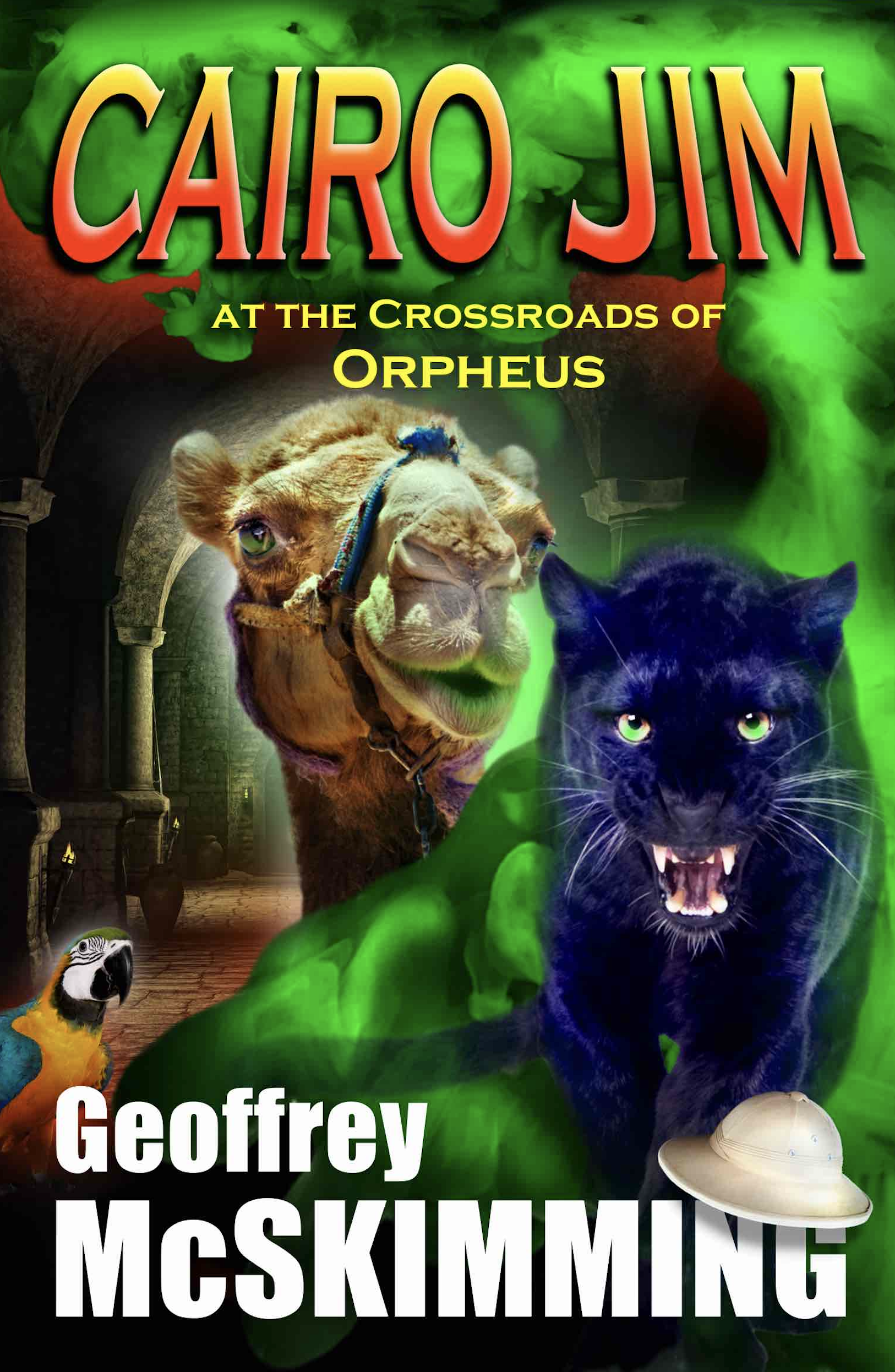Title of the work
Country of the First Edition
Original Language
First Edition Date
First Edition Details
Geoffrey McSkimming, Cairo Jim at the Crossroads of Orpheus. Sydney, N.S.W.: Hachette Children's Books Australia, 2006, 216 pp.
ISBN
Official Website
cairojim.com (accessed: August 2, 2018)
Genre
Action and adventure fiction
Humor
Magic realist fiction
Novels
Target Audience
Children (ages 9–14)
Cover

Courtesy of © 9 Diamonds Press.
Author of the Entry:
Ben Gooley, University of New England, ben.gooley@une.edu.au
Peer-reviewer of the Entry:
Elizabeth Hale, University of New England, ehale@une.edu.au
Daniel A. Nkemleke, University of Yaounde 1, nkemlekedan@yahoo.com

Portrait of Geoffrey McSkimming, courtesy of © 9 Diamonds Press.
Geoffrey McSkimming
, b. 1962
(Author)
Geoffrey McSkimming is an Australian writer of children’s fiction and poetry, best known for his Cairo Jim series. Born in and a resident of Sydney, Australia, he has travelled widely in researching his novels. McSkimming is married to Sue-Anne Webster, a professional magician. He is employed on the staff of The School Magazine, the oldest continually published magazine in Australia and the longest running literary magazine for children in the world (published since 1916). Some of his Cairo Jim and Jocelyn Osgood books have been published in many different languages. His writing is comedic and features frequent wordplays and occasional high-level vocabulary for books aimed at the children’s market.
Source:
Official website(accessed: August 4, 2017).
Bio prepared by Ben Gooley, University of New England, ben.gooley@une.edu.au
Adaptations
Available as an audiobook through Bolinda Audio, read by Geoffrey McSkimming, 2006. ISBN: 1740939050, playing time, 4hours 5 minutes.
Summary
Cairo Jim is a young archaeologist who is already an established member of the fictional Old Relics Society at the commencement of the series. He is always seen wearing a pith helmet and his desert sun-spectacles.
Cairo Jim at the Crossroads of Orpheus is located in mid-to-late 20th-century Pompeii. It is a whimsical adventure in which the hero and his companions (a talking macaw named Doris and a telepathic wonder-camel named Brenda) work with an archaeo-botanist Bette Noire to rediscover lost perfumes from the classical period and in particular the magical "Pardalium" perfume, which includes the essence of a panther, and which allows the wielder to bring others under their control.
As is the case for most of the books in this series, the antagonist is the villainous Captain Neptune Flannelbottom Bone, with his companion crow Desdemona. Bone and Desdemona steal the perfume and escape to Agrigento, Sicily to summon back powers from the crumbling ruins of the Temple of Olympian Jove from classical times, to aid in Bone’s quest for world domination. He uses the perfume to reconstitute and enliven the crumbled telamons (colossal male figures used as columns in classical architecture) from the Temple of Olympian Jove to do his bidding, leaving the heroes to devise a plan to stop him. (The original Telamon appeared in the Iliad, accompanying Jason and the Argonauts and fathering Ajax the Great.) The telamons are destroyed by Doris the macaw dropping olive juice from the (fictional) persuasion olive tree on them, which is the only way to stop them, and which is conveniently growing nearby.
Analysis
Cairo Jim at the Crossroads of Orpheus was written in 2006, a few years after an exhibition in Pompeii on the House of the Perfumer, which featured Pardalium, among other perfumes from classical times. It is possible McSkimming saw this exhibition or knew of Pardalium by other means (see here, accessed: August 2, 2018).
The power of Pardalium to bring others under the owner’s control possibly echoes the power of Orpheus to charm those hearing his music (though this connection is never spelt out). The world of Cairo Jim is one in which the world of "historical fact" and the "mythic world" weave together so that the mythic and magical tropes work their way into the contemporary world in various ways by the end of the book. Although the stories are not clearly dated, their use of plane travel locates them in the second half of the 20th Century. As an archaeological adventure story, the Cairo Jim series sees possible influence from the Indiana Jones stories, although Cairo Jim is less swashbuckling.
There are numerous incidental references to classical figures and themes (e.g. the setting in Pompeii and Agrigento, Sicily; the Crossroads of Orpheus; the Temple of Apollo; the House of the Garden of Hercules; the Temple of Olympian Jove) culminating in the restoration and vivification of the telamons from the Temple of Olympian Jove which become herculean pseudo-golems.
The milieu in which the world of Cairo Jim functions is one in which myth is merely faded reality, which can be tangibly linked with the present through some object or totem. In this way, the books often function as a limited form of portal fantasy. Although all the major characters are adults, the frequent whimsical wordplay, talking animals, and the classical and adventure themes make the books appealing to children.
Further Reading
Saxby, Maurice, Books in the life of a child: Bridges to literature and learning, South Melbourne: Macmillan Education Australia, 1997, pp. 238, 314.


